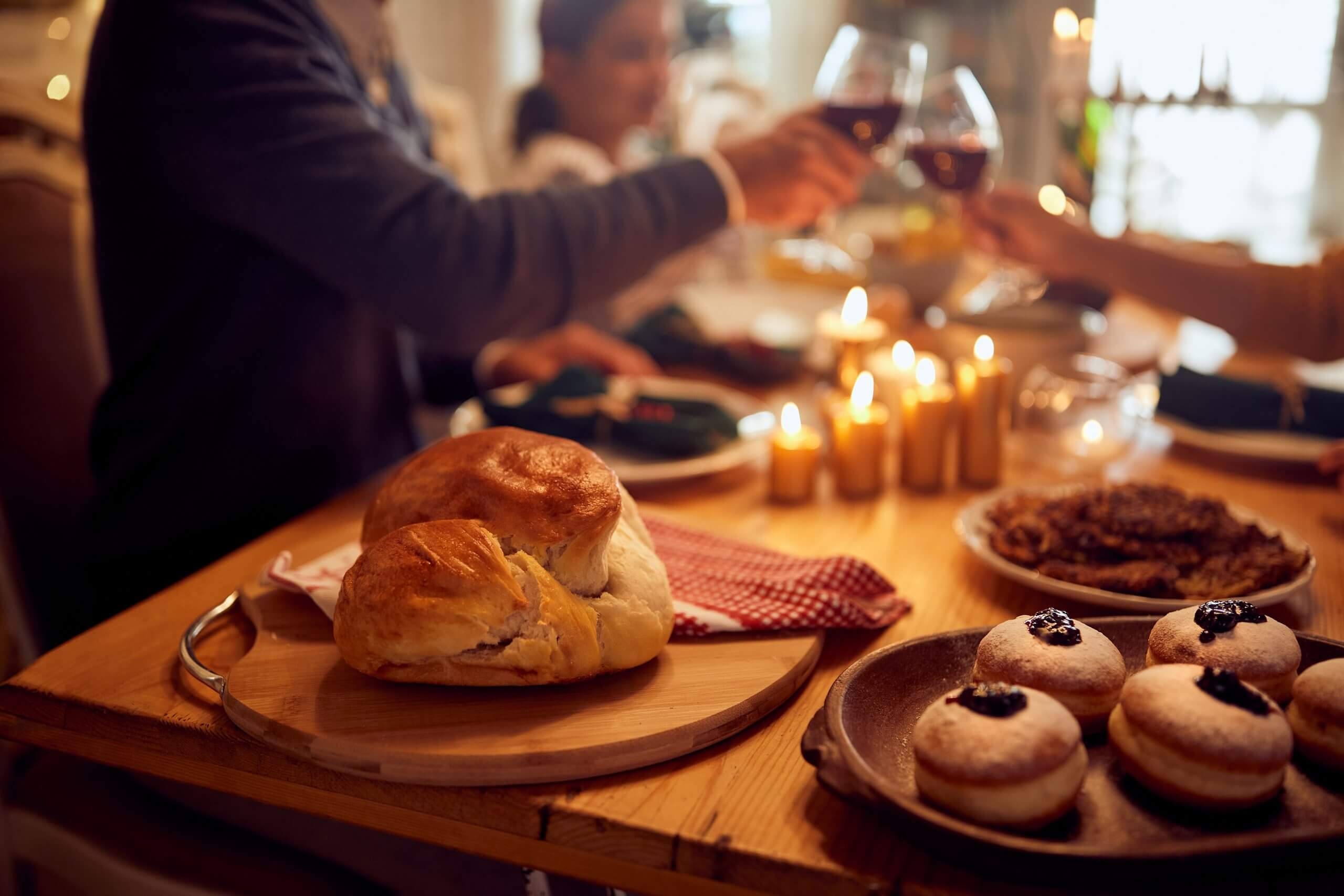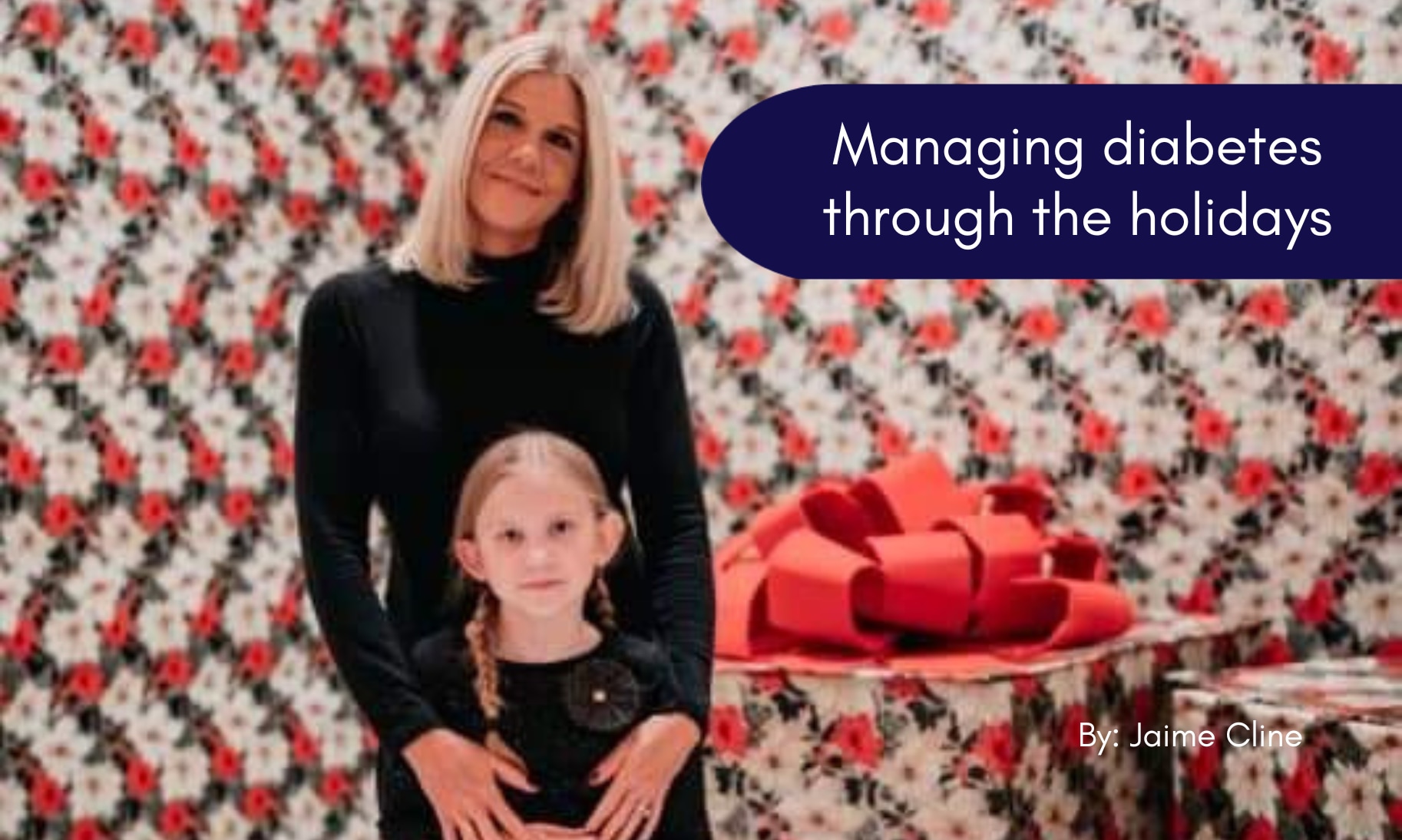Celebrating the holidays with diabetes

The holiday season is a special time for everyone, no matter how you’re celebrating. We get together with others, reconnect with friends and family—and stuff ourselves silly on seasonal treats. If you have diabetes, you may be wondering how you can successfully manage your blood sugar and insulin treatment schedule (if applicable) with all that holiday goodness going around. Look no further—here are some helpful tips and tricks to managing the holidays and diabetes.
Navigating the holiday feast with diabetes
Holiday meals wouldn’t be special without a little indulgence. And that’s okay! But you can prepare for a little excessive eating in a way that won’t lead to unexpected hypo- or hyperglycemic events. Celebrating the holidays as a person with diabetes means managing your blood sugar around a smorgasbord of sugars, saturated fats, and salt—a challenge for any mindful eater. But it’s time to let loose a little bit...safely, with these pointers:
- Stock your plate with your favorite veggies. Unless they’re coated in a caramelized covering of sugar and spice (sweet potato casserole, anyone?), scrumptious veggies are a good way of filling up without worrying about overloading on carbs. Some vegetables, like potatoes and squash, contain relatively high portions of carbs, so be careful with those.
- Go in with a portion plan. What constitutes the “right” amount of carbs in a meal is different for everyone. Large meals usually contain somewhere between 60 and 90 carbs. If you want a little taste of everything, watch your portions and stick to your plan!
- While you're at it, make room for dessert. Celebrating the holidays with diabetes is no barrier to the final course. Know what desserts you want to devour the most and make room for them in your carb count.
- Be kind to yourself. Even if you end up going a little overboard, that's no reason to feel down on yourself. Make sure to adjust your treatment to compensate and keep thinking healthy the next day.
- Plan some activities for after the meal. Taking a walk, going for a run, or playing with your kids/nieces/nephews is a good way to offset the full feeling after the big feast. You can even start a holiday tradition of an after-dinner game of pickup basketball or catch in the backyard.
What to do if you aren’t hosting
If you’re headed to one or several parties, have a plan to take care of yourself and communicate with those who may not know as much about living with diabetes. In this case, it’s a good idea to make your own dishes and bring them with you, if possible. For one, it’s an excellent way to test out your own cooking skills. You will also have a go-to dish available if the spread at the holiday event you attend isn’t so diabetes friendly. As an added bonus, sharing your low-carb recipes with others after they have had their fill may help reduce the myth that healthier eating isn’t satisfying. Delicious is delicious, low carb or not.
Tips for alcohol
Alcohol often plays a significant role as a social lubricant during the holidays. People with diabetes may be able to drink alongside their friends and families (especially if your mom insists on inviting that one crazy aunt). Here are some quick rules of thumb about drinking with diabetes during holiday events:
- Avoid high-sugar drinks, such as certain mixed drinks and cocktails made with fruit juices or simple syrups.
- Be aware that drinking alcoholic beverages can make people with diabetes less aware of their blood sugar level and hypoglycemic events.
- Don’t count on alcoholic beverages with a high carb count to stave off hypoglycemia. Liquid carbs are absorbed much faster than solid carbs and won’t do much to keep you from a low.
Knowing how to prepare for the holidays as a person living with diabetes is the biggest part of being able to enjoy yourself safely during this joyous (and sometimes chaotic) time. Simply understanding what it will take to keep your treatment schedule and diet (mostly) on track will help take a load off your mind and get you back to the reason for the season—spending time with your family and loved ones.



